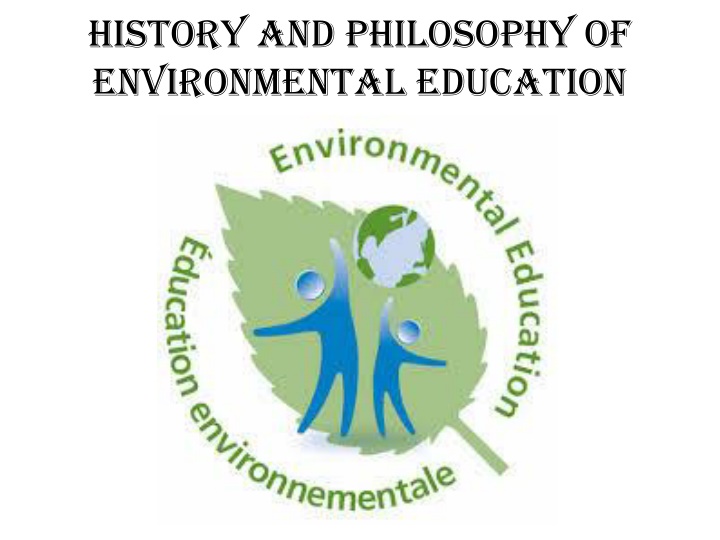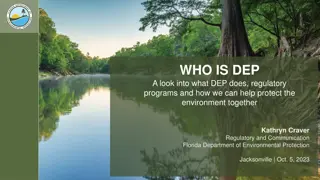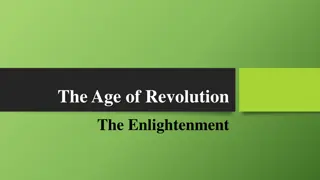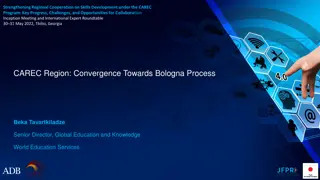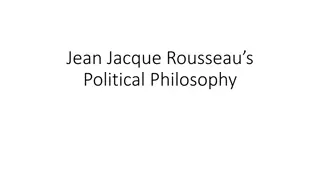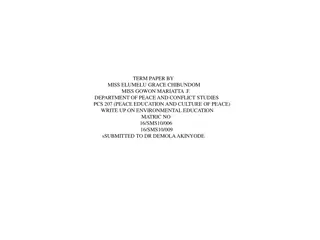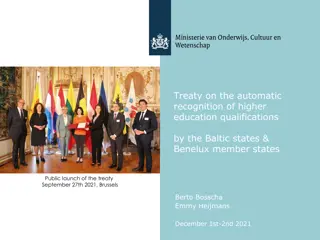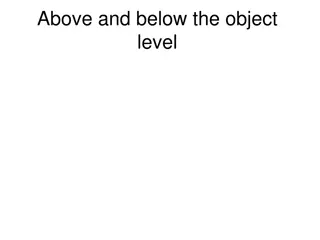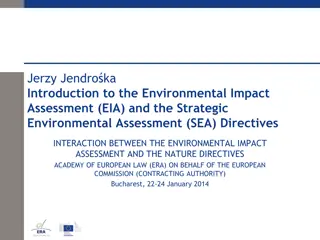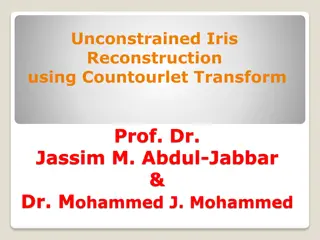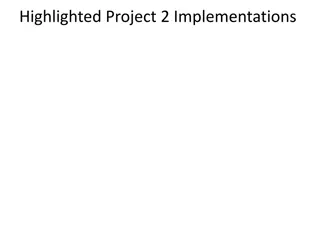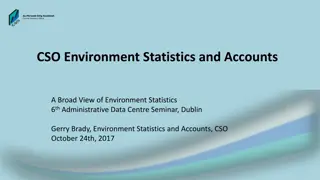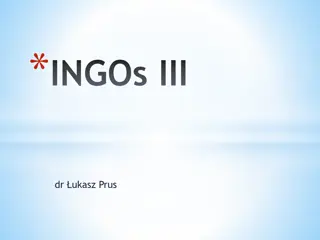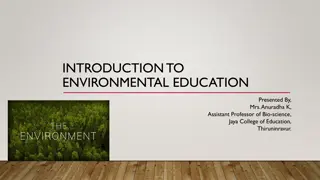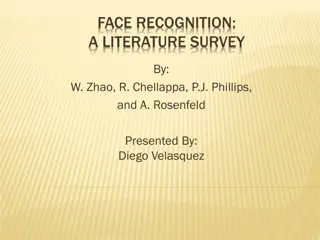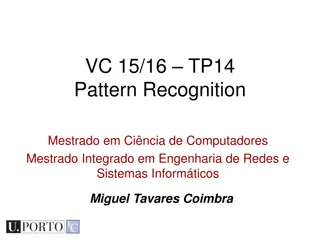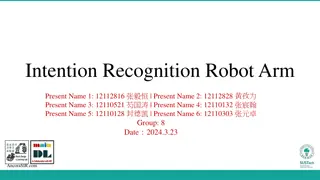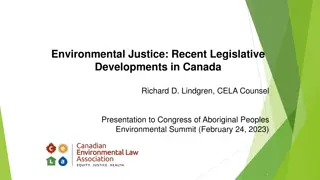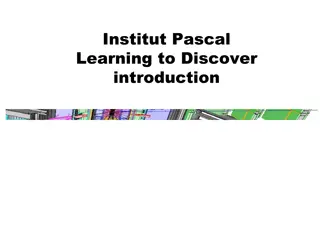Evolution of Environmental Education: From Rousseau to International Recognition
Environmental education has roots dating back to the 18th century with scholars like Rousseau and Agassiz emphasizing nature-centric education. The formalization of environmental education began in 1968 with the UNESCO Biosphere Conference, leading to global awareness and action for environmental conservation and education, culminating in the Stockholm Conference of 1972. This marked a significant shift towards integrated environmental education in formal curriculums worldwide.
Download Presentation

Please find below an Image/Link to download the presentation.
The content on the website is provided AS IS for your information and personal use only. It may not be sold, licensed, or shared on other websites without obtaining consent from the author.If you encounter any issues during the download, it is possible that the publisher has removed the file from their server.
You are allowed to download the files provided on this website for personal or commercial use, subject to the condition that they are used lawfully. All files are the property of their respective owners.
The content on the website is provided AS IS for your information and personal use only. It may not be sold, licensed, or shared on other websites without obtaining consent from the author.
E N D
Presentation Transcript
HISTORY AND PHILOSOPHY OF ENVIRONMENTAL EDUCATION
History and philosophy of environmental education The roots of EE can be traced back as early as the 18thcentury when Jean-Jacques Rousseau stressed the importance of an education that focuses on the environment in Emile: or, On Education Several decades later, Louis Agassiz, A Swiss- born naturalist, echoed Rousseau s philosophy as he encouraged students to Study nature, not books.
These two influential scholars helped lay the foundation for a concrete environmental education program, known as Nature study, which took place in the late 19thcentury and early 20thcentury. The nature study movement used fables and moral lessons to help students develop an appreciation of nature and embrace the natural world
History and development of EE Environmental Education is not a new discipline but a new dimension in the education system. The concept emerged in 1968. Earlier, environment formed part of formal and non- formal education no doubt but it was never treated as a whole.
In 1968, the United Nations Educational, Scientific and Cultural Organization (UNESCO) organized a Biosphere Conference in Paris, and in a later report on the event IUCN declared that Perhaps for the first time, world awareness of environmental education was fully evidenced (IUCN, 1971). The 1968 UNESCO Conference called for the development of curriculum materials relating to studying the environment for all levels of education, the promotion of technical training, and the stimulation of global awareness of environmental problems. It also advocated the setting up of national co- ordinating bodies for environmental education around the globe.
The Stockholm Conference EE gained recognition when the UN Conference on the Human Environment held in Stockholm, Sweden from June 5-16, 1972. Representatives from 113 countries attended this conference. For the first time, countries of the world assembled together to work out a practical plan of action for the benefit of all mankind. The conference emphasize that the conservation and improvement of the environment for present and future generations was the main goal of the conference.
As per agreement of the conference the United Nations Environmental Programme Headquarter was established in Nairobi The Conference also initiated the idea of observing World Environment Day on 5 June every year This conference led to the establishment in 1975 of the United Nations Environment Programme (UNEP), which together with UNESCO founded the UNESCO/UNEP International Environmental Education Programme in 1975. And it was launched in Belgrade s Conference.
The Belgrade Charter An International Workshop on Environmental Education held in Belgrade, Serbia from October 13-22, 1975. The IEEP produced the first inter-governmental statement on environmental education. It listed the aims, objectives, key concepts and guiding principles of it in a document prepared at the meeting known as The Belgrade Charter- A Global Framework for Environmental Education
Goals of Environmental Education ( from Belgrade s Workshop) 1. To foster clear awareness of and concern about economic, social, political, and ecological inter- dependence in urban and rural areas; 2. To provide every person with opportunities to acquire the knowledge, values, attitudes, commitment and skills needed to protect and improve the environment 3. To create new patterns of behaviour of individuals, groups and society as a whole towards the environment
The Tbilisi Declaration The first Intergovernmental Conference on Environmental Education organized by UNESCO in cooperation with UNEP was held at Tbilisi, Georgia (a former USSR) from October 14-26, 1977. The conference emphasized the importance of environmental education in the preservation and improvement of the world s environment as well as in the sound and balanced development of the world s communities.
The Tbilisi Declaration updated and clarified the Stockholm Declaration and The Belgrade Charter by including new goals, objectives, characteristics, and guiding principles of environmental education.
GOALS AND OBJECTIVES OF EE The overall goal of EE is to generate environmental actions so as to improve all ecological relationships including the relationship of humanity with nature and people with one another (Belgrade Charter, 1975)
Objectives of EE (as endosersed at Tbilisi) a) Awareness: to help social groups and individuals acquire an awareness and sensitivity to the total environment and its allied problems; b) Knowledge: to help social groups and individuals gain a variety of experience in, and acquire a basic understanding of, the environment and its associated problems;
c) Attitude: to help social groups and individuals acquire a set of values and feelings of concern for the environment, and the motivation for actively participating in environmental improvement and protection; d) Skills: to help social groups and individuals acquire the skills for identifying and solving environmental problems; e) Participation: to provide social groups and individuals with an opportunity to be actively involved at all levels in working towards resolution of environmental problems.
EE GUIDING PRINCIPLES (endorsed at Tbilisi) EE should: 1. Consider the environment in its totality natural and built, technological and social (economic, political, cultural-historical, ethical, esthetic); 2. be a continuous lifelong process, beginning at the preschool level and continuing through all formal and non-formal stages;
3. be interdisciplinary in its approach, drawing on the specific content of each discipline in making possible a holistic and balanced perspective; 4. examine major environmental issues from local, national, regional, and international points of view so that students receive insights into environmental conditions in other geographical areas;
5. focus on current and potential environmental situations while taking into account the historical perspective; 6. promote the value and necessity of local, national, and international cooperation in the prevention and solution of environmental problems; 7. explicitly consider environmental aspects in plans for development and growth;
8. enable learners to have a role in planning their learning experiences and provide an opportunity for making decisions and accepting their consequences; 9. relate environmental sensitivity, knowledge, problem-solving skills, and values clarification to every age, but with special emphasis on environmental sensitivity to the learner's own community in early years;
10.help learners discover the symptoms and real causes of environmental problems; 11.emphasize the complexity of environmental problems and thus the need to develop critical thinking and problem-solving skills; 12.utilize diverse learning environments and a broad array of educational approaches to teaching, learning about and from the environment with due stress on practical activities and first-hand experience.
Consolidation in the 1980s In 1980 the World Conservation Strategy was launched; the next major international initiative, by IUCN, UNEP and (then) World Wildlife Fund (WWF). This key document stressed the importance of resource conservation through sustainable development
In 1987 the principles of EE laid down in Tbilisi was endorsed. The same year, the essence of the World Conservation Strategy was substantially reinforced and expanded by the publication of Our Common Future (WCED, 1987) or the Brundtland Report, the outcome of the deliberations of the World Commission on Environment and Development. The report presented a major statement on a global agenda to reconcile environment with development
Rio and Beyond: The 1990s Debate arising from Our Common Future, report of the WCED 1987 led to the second and very much large conference of the United Nations Conference on Environment and Development-The Earth Summit-staged in Rio de Janeiro, Brazil, 3-14 June 1992. About 120 heads of state and government and other delegates from over 170 countries.
Several important documents were signed in the Summit: 1. Agenda 21: a major action programme setting out what nations should do to achieve sustainable development in the 21stcentury. The 40 chapters of Agenda 21 cover topics ranging from poverty, toxic waste and desertification to youth, education and free trade. There are implications for EE throughout this document e.g. Chapter 25, on Children and Youth in Sustainable Development and Chapter 36, on Promoting Education, Public Awareness and Training.
2. Rio Declaration: a statement of 27 principles for sustainability which provide the basis for the programmes of international cooperation in Agenda 21. The document sets out a blue print for sustainable future.
The UNCED also agreed: i. The Climate Change Conversion, the first international treaty to acknowledge the treat of global warming ii. The Biodiversity Conversion, the first treat to deal with ownership of genetic resources iii. Forest Principles- a non-legally binding text on principles for sustainable forest management
One of the key outcome of the Conference for educators is the recommendation that environment and development education should be incooperated as an essential part of learning, within both formal and non-formal education sectors: A proposal is made that: Governments should strive to update or prepare strategies aimed at integrating environment and development as a cross-cutting issue into education at all levels with the next three years (Agenda 21, Chapter 36, UNCED, 1992)
Trends of EE in Tanzania Environmental education in Tanzania was emphasized in the Arusha Declaration of 1967. The declaration has a strong bias on Education for Self-Reliance (ESR). The ESR philosophy accentuates promotion of indigenous knowledge with strong focus on the environment by way of creativity, critical thinking, problem-solving skills and lifelong learning. E.g. indigenous knowledge of Ngoro farming system practiced by the Matengo people in Ruvuma Region and the Ngitiri community forests in Sukumaland
The EE issues were clearly stipulated in the 1995 Education and Training Policy of MoEVT. It considered the aspects embedded in the ESR and Agenda 21 including provision of quality education and management and conservation of the environment.
Also policies issued by sectoral ministries have a number of emphases on EE/ESD aspects. E.g. the National Environment Policy and its Environment Management Act (2004); National Land Policy (1995); National Fisheries Sector Policy (1997); Science and Technology Policy (1996); Natural Forest Policy (1998); National Beekeeping Policy (1998); Wildlife Policy of Tanzania (1998); National Higher Education Policy (1999). National Education Policy and Vocational Training (2014)
In the efforts of emphasizing teaching and learning of EE/ESD, the MoEVT integrated its elements in career subjects of 1996/1997 primary and secondary school curricula and syllabi. In 2004 the MoEVT prepared a guide for integrating EE/ESD components in primary school subjects. It aimed at assisting teachers integrate EE/ESD concepts and issues where appropriate in their daily teaching of different topics
One of the aims of the Tanzania Development Vision 2025 of 1999 is to provide quality education at all levels to ensure we have a well educated nation, sufficiently equipped with knowledge and skills needed to competently solving development challenges which face the nation . It also takes into account the Millennium Goals for Development that emphasizes on ensuring environmental sustainability, eradication of extreme poverty and hunger and promotion of gender equality.
The MoEVT has various programmes in place to ensure provision of quality education at all levels. They include the Education Support Development Programme (ESDP), Primary Education Development Plan (PEDP) of 2003 and Secondary Education Development Plan (SEDP) of 2004. These programmes are influenced by the improvement of school curriculum that integrated great amount of EE/ESD issues in the school curricula. With the changes in the educational programmes, EE/ESD has been regarded as an important factor for effective environmental conservation.
